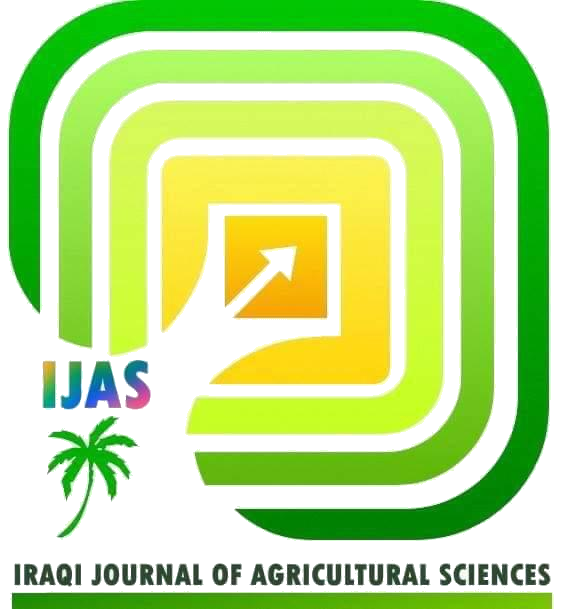ANATOMICAL COMPARATIVE FOR TWO SPECIES AMARANTHUS ALBUS L. AND AMARANTHUS GRACILIS DEFS AMARANTHACEAE) IN IRAQ.)
DOI:
https://doi.org/10.36103/gx3taq25Keywords:
amaranth, anomalous growth, sandy crystals.Abstract
This study delts with anatomical characters for the vegetative parts of two species of the family Amaranthaceae in Iraq, Amaranthus albus L. and A.gracilis Defs, as it presents results and characters had been study for the first time in Iraq .The study included epidermis and stomatal complex, the results show that the first species have Anomocytic and Anisocytic type While the other species have Anomocytic and Tetracytic type of stomatal complex,Venation of leaves had been studied also, study included the longitudinal sections of leaves and vertical sections for stems, petioles and roots. Longitudinal sections leaf of Amaranthus gracilis recognized by presence of sandy crystals, Cross sections of petioles show that the first species have crescent shaped quadric-side, while the other one have crescent shape but winged-side, The cross section of stem and roots of Amaranthus gracilis have anomalous growth phenomenon. It could be depended to studied traits in isolation identification and classification of different plants species.
References
1. Abdulrahaman, A.A. and F.A. Oladele, 2010. Leaf micromorphology of some species of Amaranthus Nig. J.Pure and Appl. Sci., Vol.23, 2136-2143.
2. Al- Lamy, S. H. B. .2002. Taxonomic Study of the Genus Anthemis L. (Compositae) in Iraq. Ph.D. Dissertation. Faculty of Education. University of Qadisiya.pp:287.
3. Al-Alaaq, S.A.J..2006.Morphological and Anatomical Study of Selected Species of Solanaceae Family in Iraq. M.Sc. Thesis Girls College of Science. Baghdad University. pp:200.
4. Al-Rawi, A. 1964.Wild plant of Iraq with their distribution Tech. Bull.14,Dir Gen. of Agr. Proj. Ministry of Agriculture, Government press,Baghdad, PP :113.
5. Carolin, R.., W. Jacobs and V. Maret.1978.Krnaz cells and mesophyll in Chenopodiaceae. Aust. J.Bot, 26:683-698.
6. Christenhusz, M. J. M. and J. W. Byng . 2016. "The number of known plants species in the world and its annual increase". Phytotaxa. Magnolia Press. 261 (3):201217.Doi:10.11646/phytotaxa. 261. 3.1.
7. Costea M., A.Sanders, and G. Waines . 2001. Preliminary results towards a revision of the Amaranthus hybridus complex (Amar-anthaceae). Sida 19: 931-974.
8. Costea, M. and D. A. Demason, 2001. Stem
morphology and anatomy in Amaranthus L. (Amaranthaceae): taxon-omic significance. J. Torrey Bot. Soc., 128: 254–281.
9. Esau, K. 1953. Plant Anatomy. 2nd. ed. Toppan Company, Ltd. pp :767.
10. Fahn, A. (1974). Plant anatomy. 2nd ed. Pergamon Press. Oxford. pp: 611.
11. Liddell H. G.; R. Scott; H. S. Jones and R. McKenzie .1843. A Greek–English Lexicon. Oxford University Press. pp: 1705.
12. Hickey, L. J. 1973. Classification of the architecture dicotyledonus leaves. Amer. J. Bot. 60(1): 17 – 33.
13. Iamonico D. .2010. Il Genere Amaranthus L. in Italia: Stato Attuale Delle Conos-cenze Ann. Bot. (Roma), Quaderni: 149-154.
14. Linnaeus, C. .1753. Species plantarum 2. Laurentii Salvii, Holmiae, pp :899.
15. Majeed, E. A.; S. A. Aliwy and L. A. Gharb.2011.Taxonomical study of species Zygophyllum fabago L. in Iraq. Baghdad Sci. J. 8(1):303-312.
16. Metcalf, C. R. and L. Chalk, .1950. Anatomy of the Dicotyledonous. Oxford at the Clarendon Press. pp :1500.
17. Mosyakin S.L.and K.R. Robertson, .1996.: New infrageneric taxa and com-bination in Amaranthus (Amaranth-aceae). Annales Botanici Fennici 33: 275-281.
18. Nasrallah,E.C. 2007a. Comparative taxonomic study of the genus Sideritis L.and Phlomis L. from family Labiatae. Ph.D. Dissertation. College of Education, Ibn al-Haytham. Baghdad University. pp: 253.
19. Palmer, J. .2009. A conspectus of the genus Amaranthus (Amaranthaceae) in Australia. Nuytsia 19 107–128.
20. Townsend, C.C. (1985) Amaranthaceae, in: Polhill, R.M. (ed.), Flora of Tropical East Africa. Behalf of the East African Governments, Rotterdam and Boston, pp: 1–136.
Downloads
Published
Issue
Section
License
Copyright (c) 2025 IRAQI JOURNAL OF AGRICULTURAL SCIENCES

This work is licensed under a Creative Commons Attribution-NonCommercial 4.0 International License.

2.jpg)
 https://orcid.org/0000-0002-5774-5906
https://orcid.org/0000-0002-5774-5906 



